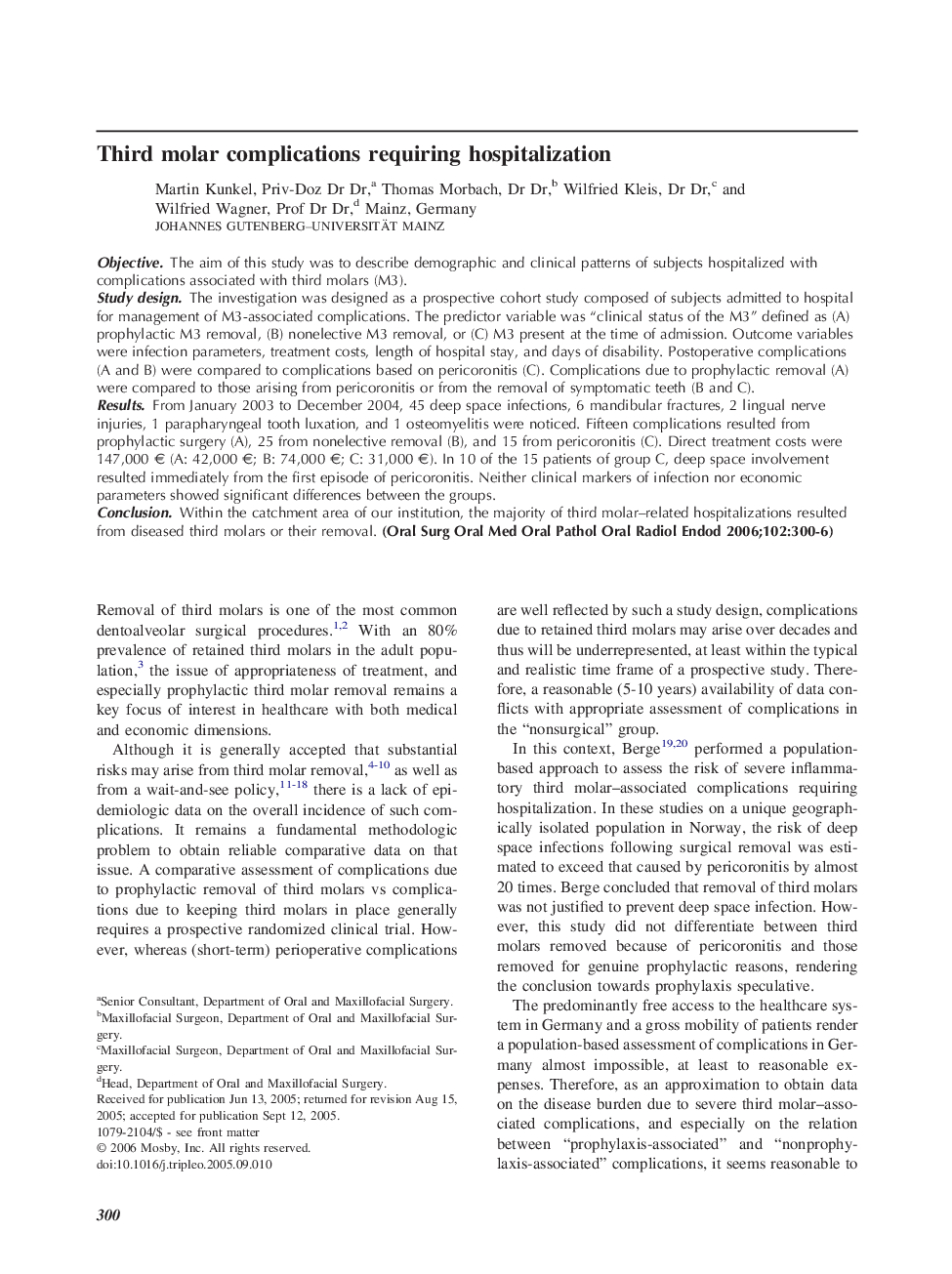| Article ID | Journal | Published Year | Pages | File Type |
|---|---|---|---|---|
| 3169877 | Oral Surgery, Oral Medicine, Oral Pathology, Oral Radiology, and Endodontology | 2006 | 7 Pages |
ObjectiveThe aim of this study was to describe demographic and clinical patterns of subjects hospitalized with complications associated with third molars (M3).Study designThe investigation was designed as a prospective cohort study composed of subjects admitted to hospital for management of M3-associated complications. The predictor variable was “clinical status of the M3” defined as (A) prophylactic M3 removal, (B) nonelective M3 removal, or (C) M3 present at the time of admission. Outcome variables were infection parameters, treatment costs, length of hospital stay, and days of disability. Postoperative complications (A and B) were compared to complications based on pericoronitis (C). Complications due to prophylactic removal (A) were compared to those arising from pericoronitis or from the removal of symptomatic teeth (B and C).ResultsFrom January 2003 to December 2004, 45 deep space infections, 6 mandibular fractures, 2 lingual nerve injuries, 1 parapharyngeal tooth luxation, and 1 osteomyelitis were noticed. Fifteen complications resulted from prophylactic surgery (A), 25 from nonelective removal (B), and 15 from pericoronitis (C). Direct treatment costs were 147,000 € (A: 42,000 €; B: 74,000 €; C: 31,000 €). In 10 of the 15 patients of group C, deep space involvement resulted immediately from the first episode of pericoronitis. Neither clinical markers of infection nor economic parameters showed significant differences between the groups.ConclusionWithin the catchment area of our institution, the majority of third molar–related hospitalizations resulted from diseased third molars or their removal.
